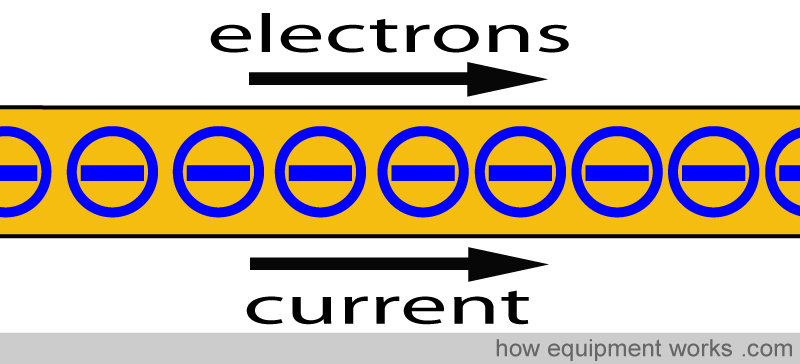
We will discuss the following aspects. Please scroll down and start reading.
- Why should you understand electricity
- Current and amperes
- Potential difference and volts
- Relationship between potential difference and current
- Sources of Potential Difference
- Concept of resistance
- Ohms Law
- DC and AC current
Why should you know about electricity?
Electricity is everywhere. There are billions of electrons flowing all around you: in operating room lights, anaesthesia monitors , diathermy , ventilator controls, syringe pumps, the computer screen that you are reading now and so on and so on …..
The amazing image below shows a picture of Earth taken at night from outer space. The street and house lights illuminate the countries and give an idea of how widespread the use of electricity is all over the world. In the image below, how lit up is your country?
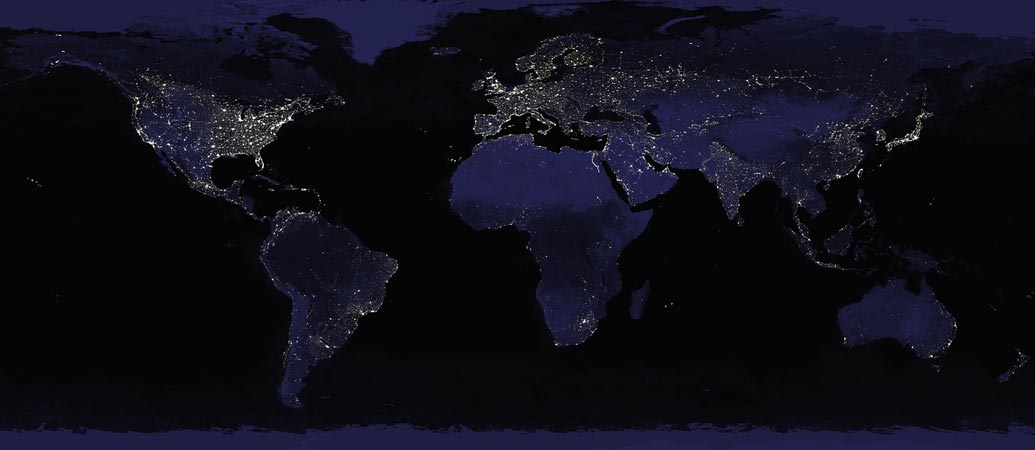
Learning a bit about electricity is useful because:
- It will provide the basics for understanding electrical safety.
- It will help you to better understand the principles of electrical medical equipment such as electrosurgical devices, defibrillators, temperature measurement etc.
Electrical current and ampere
One often hears the words “current”, “voltage” and “resistance”. It is very important to understand these three concepts well. Let us start by explaining what electric current is. Let us imagine that an electrical current is going through the light brown wire below.
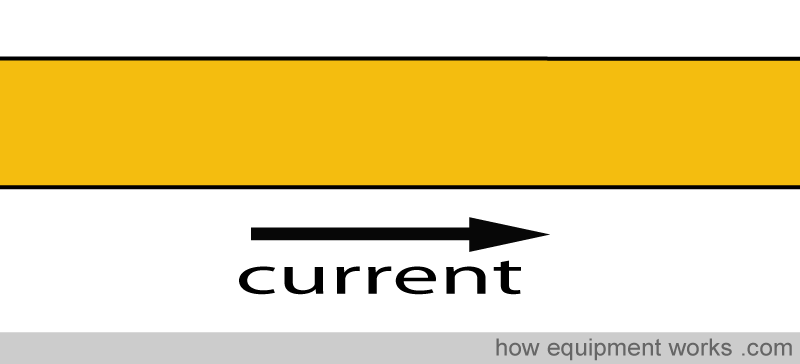
When we say that an electrical “current” is flowing, what is it that is actually flowing? Current is the flow of electrons. Electrons can be thought of as negatively charged “particles”. The movement of these electrons is called current.
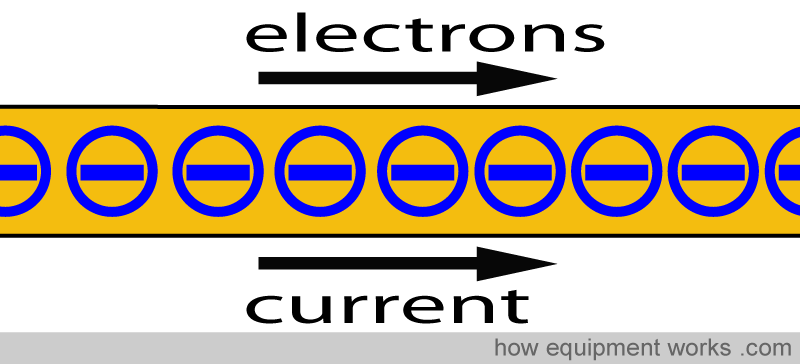
Current is measured in units called ‘amperes’. The number of amperes in a wire relates to how many electrons pass a cross section of the wire per second.
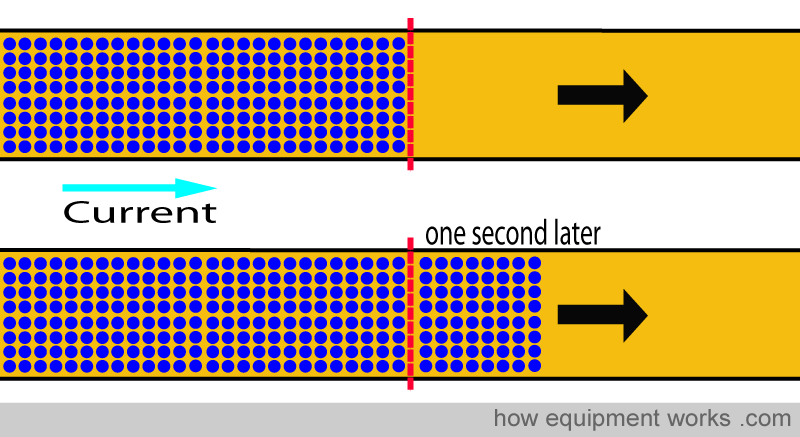
A current of one ampere relates to a certain number of electrons passing a cross-section of the wire in one second. This number is absolutely huge, and please don’t bother to remember it. The wire below is carrying one ampere of current.

The higher the current (higher amperes) higher the number of electrons that pass a cross-section of the wire per second.
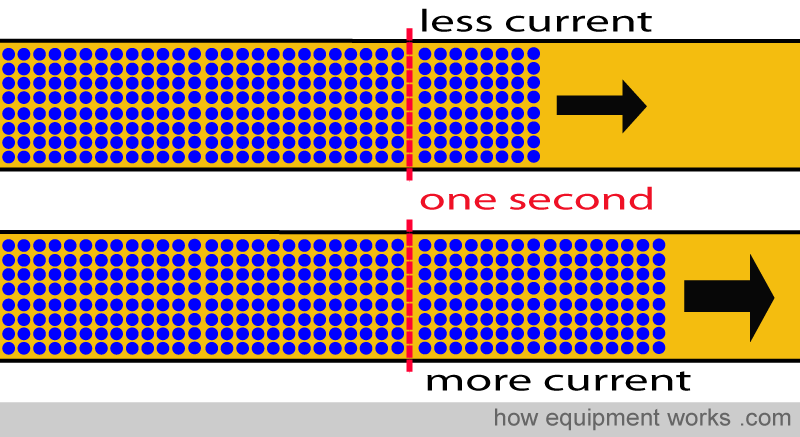
In reality, it is really tough to count zillions of electrons.

Since it is so difficult to count so many electrons, the official definition (“International System of Units”) of the ampere relies on a more “practically measurable definition”. To you and me (non-physicist), even this definition would still appear very impractical, but at least you don’t have to count individual electrons. The ‘practical’ definition is given below, but please don’t memorize it (unless you are gifted with an unlimited memory capacity).
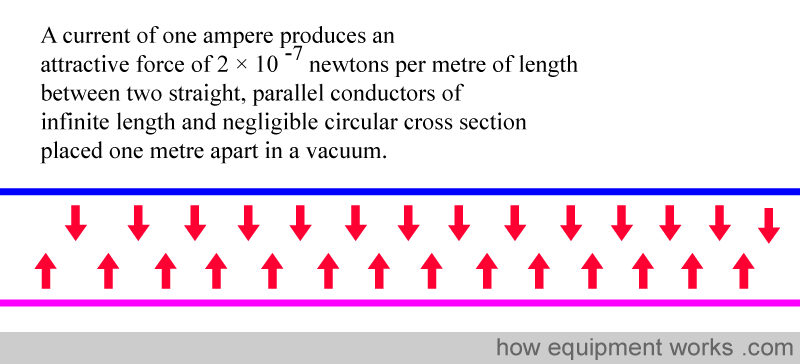
So in summary, ampere relates to the amount of electrons flowing across a wire per second.

I am the author of this website. Let me tell you about another website I created that you may like. In addition to medical technology, I am interested in psychology, especially how one’s thoughts can affect one’s happiness. I have created a website that explains how to find happiness by changing one’s way of thinking. The website is free, and you are welcome to visit it at the link below.

Potential difference and volts
It is common knowledge that water and electricity don’t mix very well!

However, interestingly, water and electricity behave in a ‘sort of similar’ way. Since, unlike electricity, water is visible, it is often useful to first understand the behaviour of water and then using it to understand electricity.
So now let us imagine that you want to install a beautiful waterfall in your garden (also imagine that you are rich enough to have a big garden).
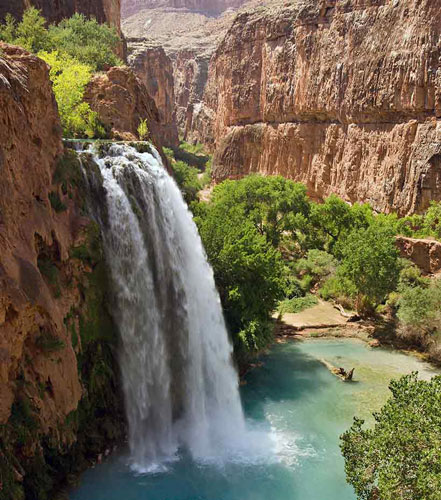
To save money, you decide to build, by yourself, what you think is a waterfall. It looks like this.
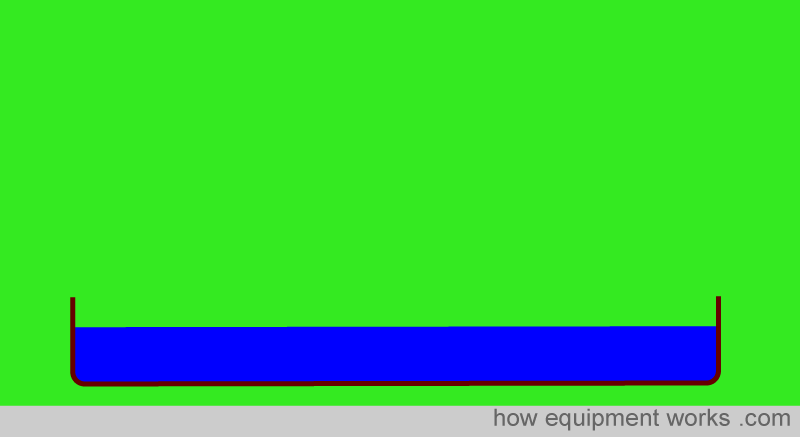
Unfortunately, the water doesn’t flow at all. You cannot understand why.
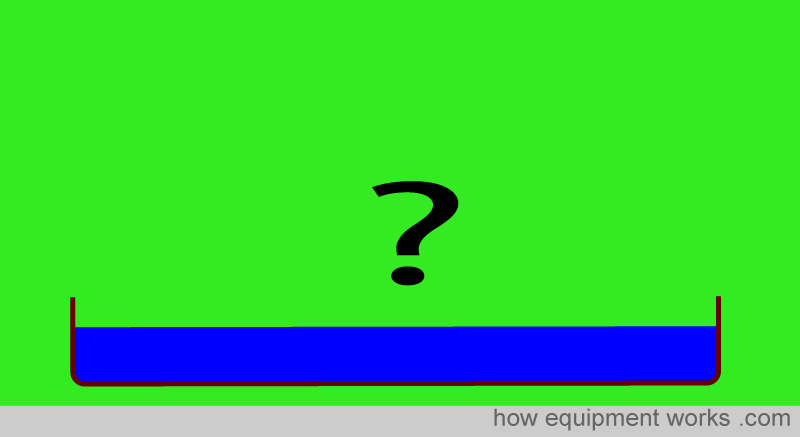
The reason why there is no water flow is that there is no energy difference in the flat pond. For water to flow, there needs to be a difference in energy between one area and another. Then the water will flow from the area with high energy to the area with low energy. In the case of a waterfall, this energy can be given by elevating one part of the water. The elevated water has more energy (due to gravity) than the water at the base, making water flow.
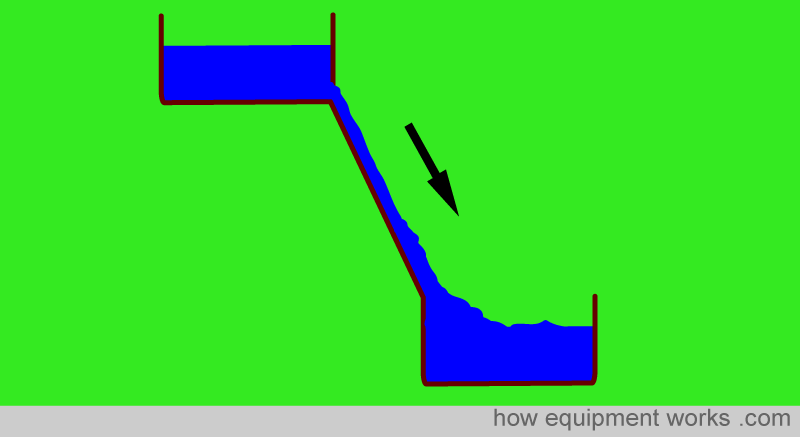
Let us examine this in terms of energy. In the case of the waterfall, it is gravity that determines energy. Higher the water, higher is the potential energy it has. In our waterfall, the higher tank has a higher potential energy than the lower tank which has a lower potential energy and this difference in energy makes the water flow. As the water flows down the waterfall, it loses potential energy. Once it reaches the lower tank, it has a lower potential energy than the higher tank.
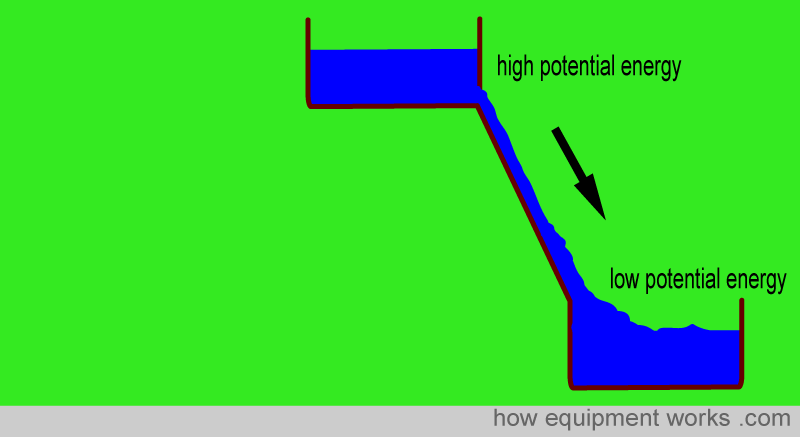
Once the top tank is empty, of course water wont flow back upwards on its own. This is because water does not flow from an area of low potential energy to an area of high potential energy.
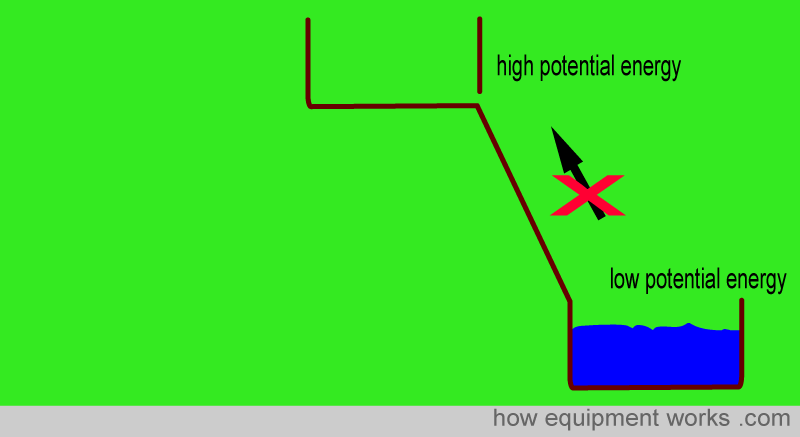
For the same reason, if you simply connect a pipe from the lower tank to the upper tank, the water won’t go back to the higher tank.
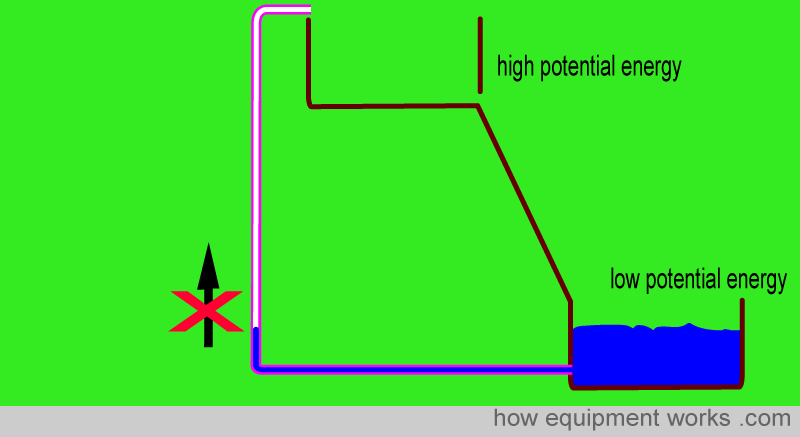
If we want our garden waterfall to keep working we need to make water return to the upper tank. For this, we need to provide energy to the system. This is possible with a water pump. Water in the upper tank has a high energy and as explained before, it flows down, giving up energy in the process. The pump then “provides energy to drive the system” by taking the water with lower potential energy and pumping it up to the upper tank. The water that has reached the higher tank now has a high potential energy and is able to flow down again, repeating the cycle again and again. Now we finally have a beautifully working garden waterfall that keeps on flowing.
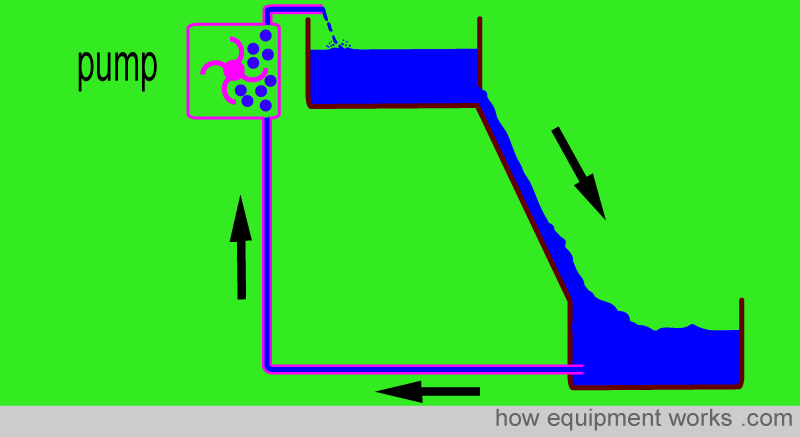
Now let us move to something electrical. Instead of having a waterfall, let us imagine that we want to light up a light bulb. A light bulb is something that lights up when current passes through it.
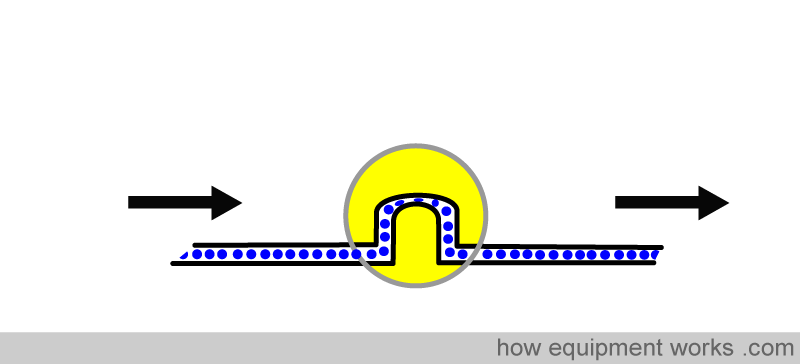
Let us connect up some wires to the bulb to try and make it light up. But sadly, we find that the bulb does not light up. We can see that the wire has electrons in it, but the bulb does not light up. Why is this ?
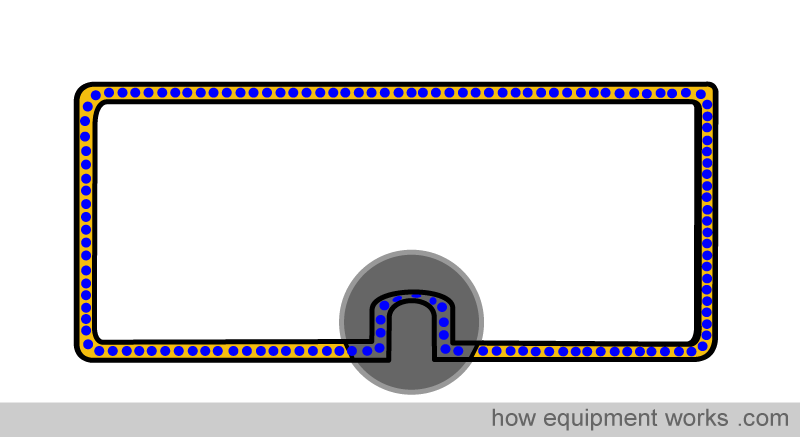
The reason that the bulb does not light up is that there is no “flow” of electrons. Electrons need to move in one direction to make the light bulb light up. If they just ‘hang around’ without moving in one direction, nothing happens.
Let us see the wire in close-up to see why the bulb is not lighting
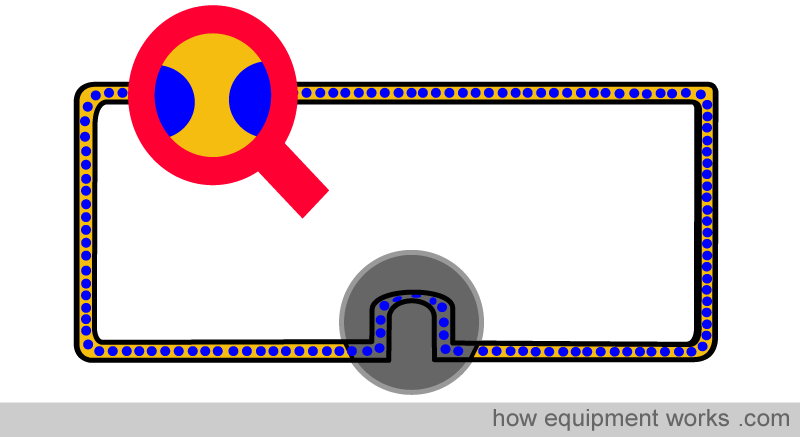
You will see that the electrons in the wire are moving randomly in all directions. However, it is important to note that they are NOT moving in one particular direction, are simply ‘hanging around’. You will recall that current is the flow of electrons in a particular direction. So in our example so far, since the electrons in the wire are all not flowing in a particular direction, there is no current passing through the bulb, and hence the bulb does not light up.
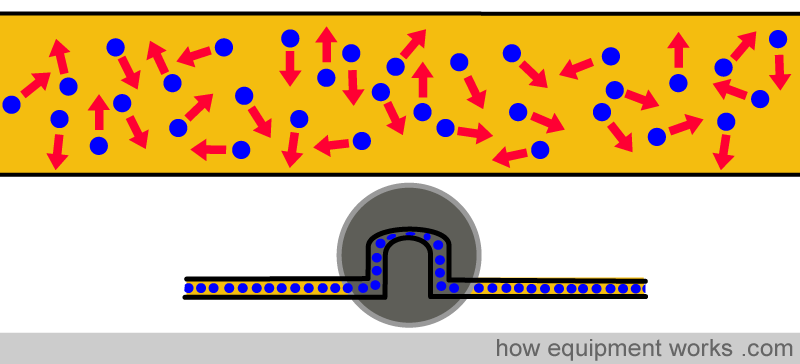
This is similar to the situation where the waterfall did not work without a pump. The waterfall system has water, but the water is not moving in a particular direction, due to the lack of energy.
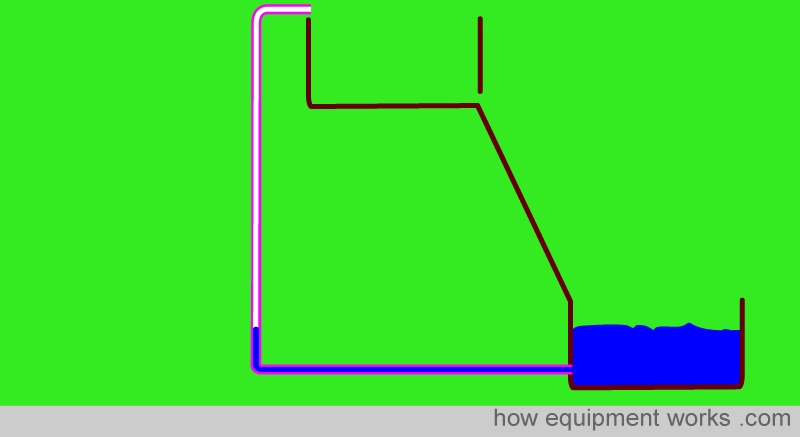
In the waterfall, you will recall that a pump was necessary to provide the energy difference for the water to flow.
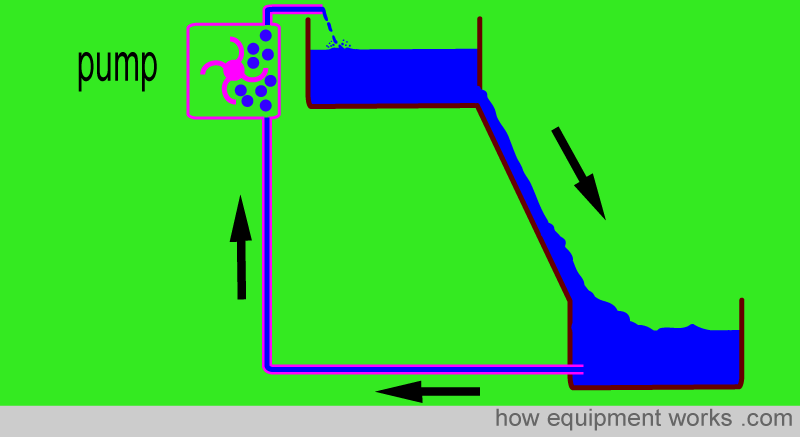
Just like the water in the waterfall, electrical circuits need a potential energy difference to make the electrons flow.
The image below shows two wires. The upper wire has no potential difference across it. The electrons are randomly moving in all directions with no flow in one particular direction. Therefore this wire is not carrying any current. The lower wire has a potential difference across A and B. It makes the electrons flow in a particular direction and therefore this wire is carrying a current.
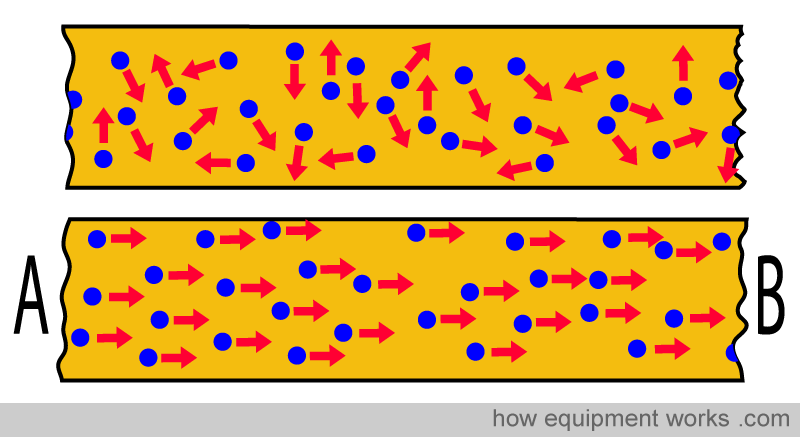
There are a variety of sources that can produce a potential difference that can make a current flow in an electrical circuit. You can think of a ‘potential difference source’ as being like the pump in the waterfall we discussed. The pump makes water flow around the system. In an electrical circuit, the potential difference source makes the electrons (i.e. current) flow around the circuit.
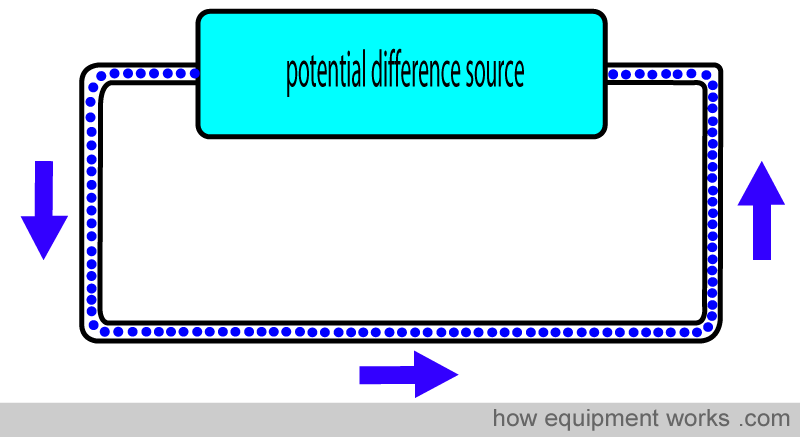
Potential difference sources have a ‘ negative pole’ and a ‘positive pole’. The current leaves the negative pole and returns to the positive pole.
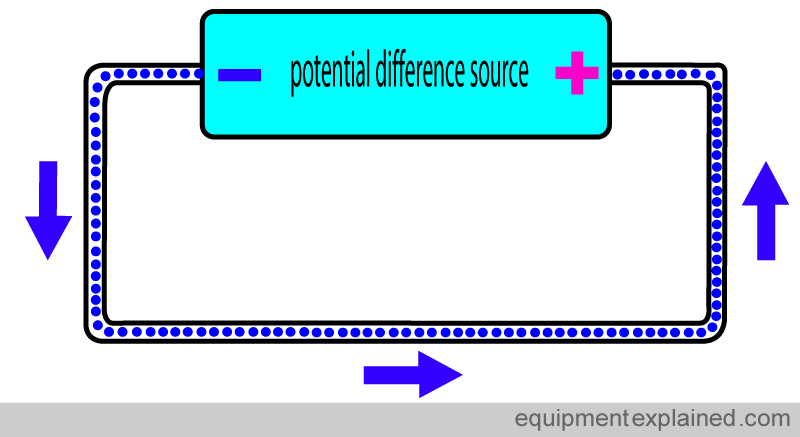
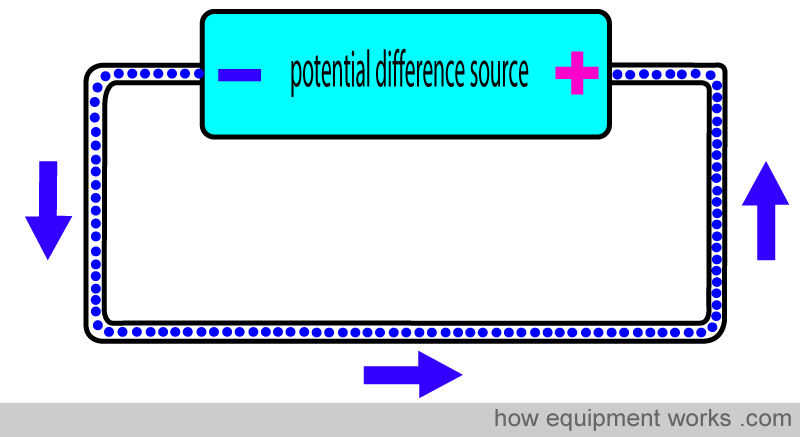
As mentioned before, there are many types of potential difference sources, and many of these will be discussed later. For now, let us discuss a common potential difference source that you may have used at home and hospital. This source is the common disposable battery. You may have put these in the clocks in your home. Most laryngoscopes use these batteries to power the light bulb.
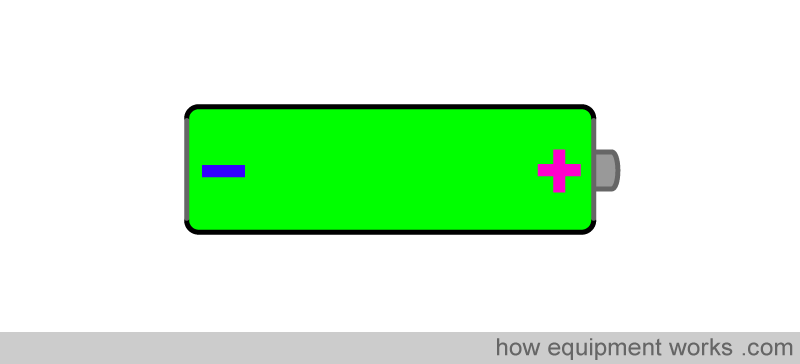
Let us now connect this battery to the bulb we were trying to light up before. The potential difference generated in the battery makes the electrons move. The current goes from the negative pole, through wires to the bulb, goes through the bulb and makes it light up, and returns by wire to the positive pole.
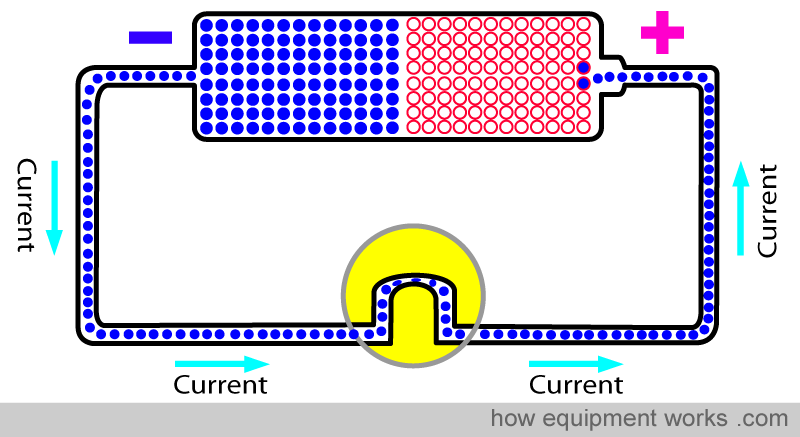
The unit of measurement for potential difference is “volt”. More the potential difference across the poles, more is the volts.
A typical household battery has 1.5 volts, abbreviated as “1.5 V “

On the other hand, the potential difference coming out of wall sockets can be quite high (e.g. 120 volts or 230 volts).
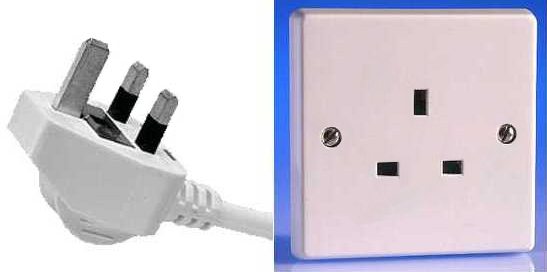
Now I must confess that drawing all this stuff can be quite tiring. Fortunately, when discussing electricity, one doesn’t have to draw the “real” thing all the time. Instead, one can use symbols. For example, the symbol for a battery is:
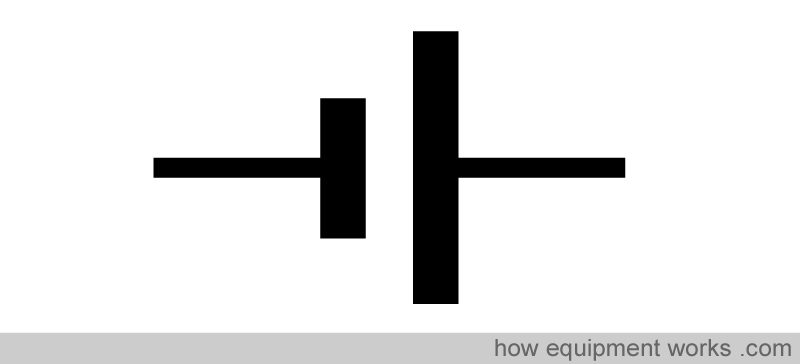
The shorter vertical line represents the negative pole.
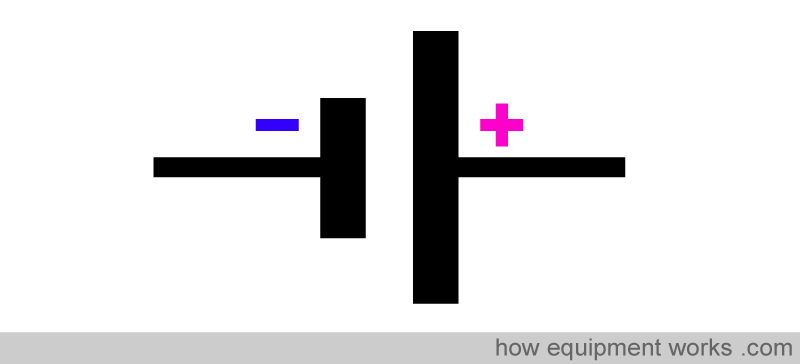
A way to remember which vertical line is negative and which one is positive is to remember that ‘ n ‘ is shorter than ‘ p ‘.
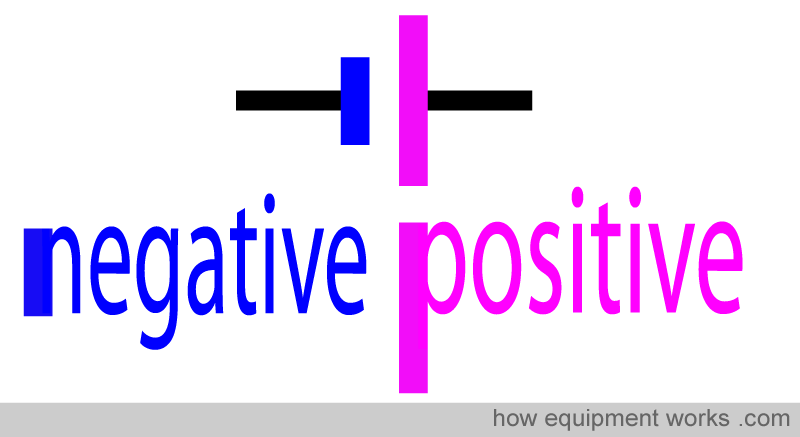
Similarly, a light bulb can be represented by a symbol.

You will see that electrical circuits can be drawn much more easily using symbols than using realistic diagrams. For an example, look at this complex diagram.

It can be easily drawn as:

In practice, real medical equipment circuits can be very complex and the use of symbols becomes very convenient. Below is a very simple (for engineers ! ) electrical circuit drawn using symbols.

Please click the “Next” button below to read part 2 about electricity basics. Thank you.